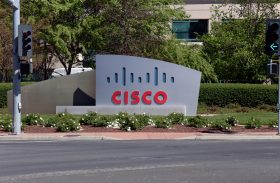The Edge Is Back with MWC: What’s New?
BARCELONA - When we last left off at Mobile World Congress (MWC) in 2019 before its pandemic shutdown, one of the big topics was the cloud edge. This topic has resurged with the relaunch of MWC here this week.
The market for edge is still amorphous and difficult to define, subject to a lot of debate, and a bit confusing. Searching for killer edge apps or business use cases is still a bit like looking for your NBA team’s next star point guard. It’s fair to say it’s been a bit disappointing.
What Is the Edge?
Speeding up to 2022, the debate rolls on. What specific apps and use cases need edge access? Some applications that Futuriom is tracking that are especially suitable to the edge include computer vision and artificial intelligence (AI), business analytics, and factory automation.
This has long been an understanding of the edge – putting more compute in strategic locations. The direct analogy is to content delivery networks (CDN), which offload core network traffic for content downloads by storing copies closer to the users.
Edge networks will expand these capabilities beyond CDN: Think about them as providing the capabilities of security, compute, and networking wherever an application might need them, whether that’s in a public cloud or at a regional data center or local branch.
What Has Changed?
While we’ve been hearing hype for edge infrastructure for some time, the evolution has been a bit disappointing. But just because we haven’t had a holy grail of hot apps flooding demand for the edge doesn’t mean they won’t come.
“The hottest apps on the edge are the ones we don’t know about yet,” said Douglas Mancini, Chief Commercial Officer of Ori Industries, an edge automation startup based in the U.K. that has a partnership with VMware.
“The mistake people make is they say edge is about low latency. How many autonomous cars are on the road? None,” said Mancini. “We have looked at the edge in a different way… sensors and equipment in factories or public clouds. When you are managing this disparate infrastructure and new distributed applications, it’s slow and painful.”
Hybrid Cloud Will Push Edge Forward
So the short answer is… it’s complicated. But with the chatter growing about the need for hybrid cloud, whereby organizations have more control of assigning how and where their cloud infrastructures deliver applications, edge will become a part of the picture.
One of the things that has changed in the past couple of years since MWC 2019 is the that cloud providers have a much larger presence at the edge and have unveiled new services. Some of these include Amazon’s Outposts and private wireless services, Google’s Edge and on-premises cloud services, and Microsoft’s Azure Stack Edge and IoT gateway.
But some members of the telco industry as well as some edge startups point out that this is exactly what organizations are looking to diversify away from – the cost and lock-in for public cloud. And if they need new resources at local sites – for example compute operations inside a retail store – possibly they would like to manage and build it themselves rather than use a cloud provider. That way, they could also control costs.
One might break it into buckets: Security, networking, and compute.
Abe Ankumah, vice president of Product for VMware SASE, said VMware has brought together a unique combination of networking and security to serve the needs of edge applications. Ankumah said some of the applications most frequently targeted are factory automation, transportation, and seaports. VMware has also been partnering with telecom providers to build out their own edge infrastructure to be delivered as a service.
“These new applications are highly distributed. We are enabling CSPs [communications service providers] to modernize the edge infrastructure. They need to build overlay services to insert new services very quickly,” said Ankumah.
Amazon and VMware on Tuesday announced they would partner to develop edge solutions -- using VMware’s Telco Cloud, VMware SD-WAN, and AWS Wavelength, for example.
Cloud networking startup Arrcus announced it is partnering with VMware at the edge. Its ACE 2.0 platform is now interoperable with VMware Telco Cloud Platform. VMware's platform allows service providers to run and manage all containerized network functions (CNFs) and virtualized network functions (VNFs) on one platform.
Arrcus CEO Shekar Ayyar, a former VMware executive, told me that the concurrent emergence of cloud and technologies such as 5G require networking software that can be managed dynamically to handle connections at more densely connected sites, or across multiple clouds.
“Telcos are all looking at the efficiency of their 5G architecture and their 5G strategies,” said Ayyar. "5G is denser. There are more cell towers. Each of these points becomes a small data center.”
In other words, service providers need to roll out thousands more sites in a denser distribution. And enterprises are finding the need to build new networks that can combine compute and networking available at every site, both on premises and in the cloud.
Nokia Unveils Adaptive Cloud Networking
Another big networking incumbent, Nokia, rolled out a new edge strategy at MWC. Nokia unveiled Adaptive Cloud Networking, a solution targeted at the edge. This includes a combination of Nokia’s datacenter networking products and the new Edge Network Controller, which enables automation of networking infrastructure using Kubernetes. The goal is to build a software-based networking solution that can be integrated into DevOps frameworks using infrastructure as code.
“There is a focus around the edge,” said Roland Thienpont, IP Division Product Manager with Nokia. “This is relieving the core network from a bunch of traffic. The edge cloud is a more extreme version of the cloud itself, only closer to the customer. The debate is about how far you distribute it.”
The bottom line is that in two years, the hype around edge has progressed toward real solutions in the market based on cloud-native technologies. The question now is how fast will they be adopted and deployed to build edge infrastructure.
After hearing the many edge pitches, I was ready for Telefonica’s “5G Bartender.” Now that’s a killer app for a trade conference.





